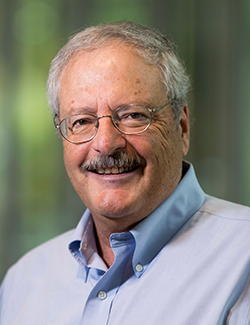Gerald Hart


Gerald Warren Hart, Ph.D.
October 1st, 2018, Hart moved to take a position as the Georgia Research Alliance William Henry Terry, Sr. Eminent Scholar in Drug Discovery, and Professor of Biochemistry and Molecular Biology at the Complex Carbohydrate Research Center, University of Georgia. Prior to that appointment, he worked at Johns Hopkins Medical School for 41 years. He has served as the Director of Biological Chemistry at JHU SOM for over 20 years. Hart was elected as a Fellow of ASBMB in 2022 and the President of ASBMB (2018-2020). Hart received the 2019 President’s Innovator Award from the Society for Glycobiology (SFG), the 2018 Herb Tabor Award from ASBMB, the 2018 Yamakawa award from the Japan Consortium for Glycobiology and Glycotechnology, the Karl Meyer Award from SFG in 2006, and the first IGO Award from the International Glycoconjugate Organization in 1997. He was an Associate Editor of the Journal of Biological Chemistry (2012-2022) and of Molecular and Cellular Proteomics (currently). He also founded the journal Glycobiology in 1989, now the leading journal in the field and served as its Editor-In-Chief for 12 years. During his graduate career, he performed some of the earliest studies on cell surface heparan sulfates and on the roles of proteoglycans and sulfotransferases in corneal transparency. During his postdoctoral work, he determined the minimal sequence requirement for N-glycosylation (-Asn-X-Ser-) and showed that corneal keratan sulfate is made via the N-glycan biosynthetic pathway. In 1983, Hart’s laboratory discovered O-GlcNAcylation, he co-led elucidation of GPI anchor biosynthesis with Paul Englund’s group, and his lab documented the importance of protein structure for N-glycosylation. His lab later discovered the extensive crosstalk between O-GlcNAc and phosphorylation, which regulates transcription and signaling and underlies the etiology of diabetes, neurodegenerative disease, cardiovascular disease and cancer. ~319 publications; Google H-factor = 129; i10-index=284.
